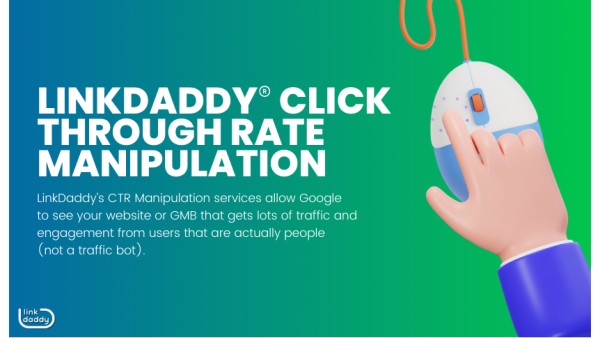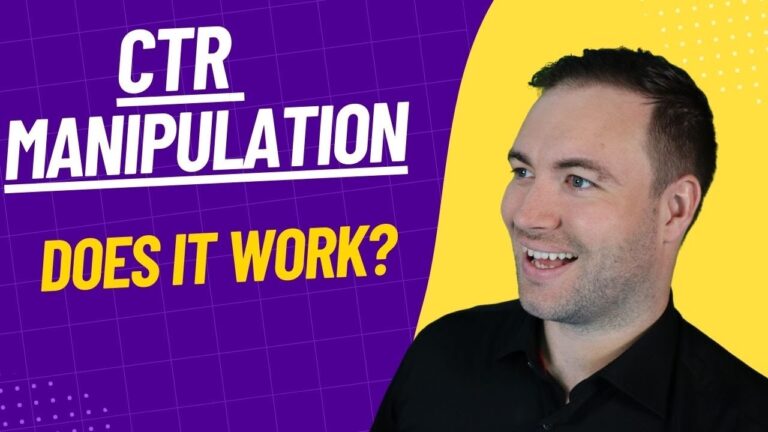Optimize Your Online Effect with LinkDaddy CTR Manipulation Solutions
Optimize Your Online Effect with LinkDaddy CTR Manipulation Solutions
Blog Article
Maximizing Organic Click-Through Rates With CTR Manipulation
The optimization of organic click-through rates (CTR) is a nuanced endeavor that pivots on recognizing both customer psychology and reliable web content discussion. By leveraging tactical manipulation strategies, such as strongly crafted headlines and aesthetically engaging aspects, online marketers can significantly enhance customer interaction. Nevertheless, the landscape is raging with misconceptions and oversimplifications concerning what genuinely drives CTR. As we explore the intricacies of these approaches, it becomes crucial to determine the underlying principles that can result in sustained success in capturing target market focus. What really distinguishes the effective from the ineffective in this crucial facet of digital advertising and marketing?
Understanding Click-Through Rates
Comprehending click-through prices (CTR) is important for assessing the effectiveness of internet marketing methods. CTR measures the percentage of users that click a specific link or ad compared to the overall number of customers who watch it. A higher CTR indicates that the material is involving and pertinent to the target market, while a reduced CTR might signal a demand for optimization.
To determine CTR, separate the number of clicks by the variety of impressions and increase by 100. As an example, if an advertisement gets 300 clicks out of 10,000 impressions, the CTR would certainly be 3%. This statistics is important for evaluating numerous aspects of digital marketing, including seo (SEO), email campaigns, and social media sites advertising.
Furthermore, analyzing CTR assists marketing professionals recognize which methods generate the most effective results and which call for improvement. By focusing on boosting CTR, companies can improve their web content's presence and effectiveness, bring about boosted web traffic and potential conversions. Comprehending the subtleties of CTR is foundational for any kind of online marketer intending to maximize their on-line visibility and make best use of roi (ROI)

The Psychology of Customer Actions
User behavior is significantly influenced by emotional variables that determine exactly how people connect with on the internet material. Understanding these elements is crucial for optimizing click-through rates (CTR) in organic search outcomes. Cognitive biases, such as the anchoring effect, play an important role in forming individuals' perceptions. When customers run into information, their first perceptions can greatly affect their succeeding judgments regarding relevance and credibility.
Emotional actions also significantly impact individual habits. Material that reverberates mentally can activate a sense of seriousness or curiosity, motivating customers to click. In addition, social proof-- such as customer testimonials or scores-- can enhance depend on and urge involvement, as individuals frequently look to the behaviors of others to educate their own choices.
Moreover, the principle of deficiency can drive clicks - CTR Manipulation Press Release. Limited-time deals or special web content produce a fear of missing out (FOMO), engaging individuals to act promptly. Recognizing these emotional motorists enables marketers to produce even more engaging web content that resonates with their target market
Efficient CTR Control Strategies
Leveraging psychological understandings can substantially boost click-through prices (CTR) through targeted adjustment strategies. Among one of the most efficient techniques is the use of engaging headlines that evoke inquisitiveness or seriousness. Wording titles website link as concerns or incorporating numbers can attract even more focus, motivating individuals to click.
One more method involves maximizing meta descriptions to produce a sense of importance and immediacy. By clearly outlining the solutions or advantages given in the content, you can engage prospective viewers and persuade them to click. In addition, using power words-- such as "special," "shown," or "complimentary"-- can boost the allure of your material.
Visual elements likewise play a crucial function. Integrating appealing pictures or thumbnails can draw customers in and improve CTR. A/B testing various visuals can aid determine which pictures resonate best with your audience.
Finally, making sure that your web content promises deliverable worth brings about greater CTR. When individuals view that clicking will certainly offer them with significant insights or services, they are more probable to engage. By employing these techniques thoughtfully, marketers can effectively adjust CTR to their Click This Link benefit while keeping moral standards.
Typical Myths Regarding CTR
Several false impressions border click-through prices (CTR) that can lead marketers to make misdirected choices. While a high CTR suggests that more users are clicking, it does not ensure sales or conversions.
Another common idea is that CTR is a separated metric. In fact, CTR ought to be examined combined with other performance indications, such as bounce price and conversion price, to gain an alternative view of project success.
Additionally, some marketers assume that maximizing for CTR alone suffices. Nevertheless, concentrating specifically on CTR can bring about clickbait tactics that might draw in clicks but fall short to engage users meaningfully. This approach can harm brand reputation and cause reduced retention rates
Finally, there is a notion that CTR strategies are universally reliable. The fact is that optimum CTR methods can differ substantially across industries and target audiences, requiring tailored strategies for various market segments. Recognizing these misconceptions is critical for creating effective CTR methods that straighten with overarching advertising and marketing objectives.
Determining CTR Success
Although high click-through prices (CTR) can suggest successful engagement with content, determining their true success needs a thorough analysis of numerous variables. It is crucial to comprehend the context in which the CTR is achieved. For example, a high CTR on a deceptive title may not convert to significant involvement or conversions, ultimately reflecting badly on the brand's trustworthiness.
2nd, evaluating the resource of website traffic is crucial. Organic traffic from search engines can represent click here to find out more a robust material method, while clicks from unimportant sources may indicate a lack of targeting. Additionally, gauging the subsequent user actions is crucial; analyzing metrics such as bounce price, time invested in page, and conversion prices can give much deeper insights into the high quality of the involvement initiated by the CTR.

Final Thought

The optimization of natural click-through prices (CTR) is a nuanced endeavor that pivots on understanding both customer psychology and reliable material discussion. CTR determines the portion of customers that click on a particular link or ad contrasted to the complete number of individuals who watch it. A higher CTR shows that the web content is engaging and relevant to the target audience, while a reduced CTR may indicate a need for optimization.
Focusing solely on CTR can lead to clickbait strategies that might bring in clicks yet fail to engage users meaningfully. In addition, measuring the subsequent user actions is important; assessing metrics such as bounce rate, time invested on page, and conversion prices can supply much deeper insights right into the top quality of the engagement launched by the CTR.
Report this page